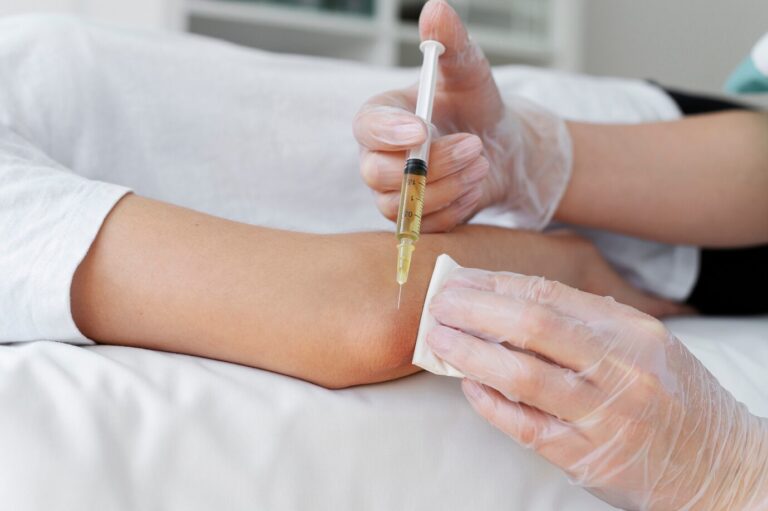Platelet-rich plasma, known as PRP, has diverse applications, including aesthetic services. Understanding what exactly is PRP, and why the preparation process matters helps to select better services. Here is how PRP is prepared, its application points, and how to choose the right source:
What is Platelet-Rich Plasma (PRP)?
PRP is derived from your blood and contains concentrated platelets responsible for clotting and tissue repair. This preparation also carries growth factors that may support the body’s natural healing process when processed correctly. These properties help professionals in both medical and cosmetic fields achieve desired results.
How is PRP Prepared?
The preparation of PRP is a multi-step process, and every step plays a role in determining its quality. It usually begins with a blood draw from the patient. This blood is then placed in a centrifuge that spins the sample at high speeds to separate its components. This process separates platelets from the white and red blood cells, creating the enriched plasma used in treatments.
There are variations in how centrifugation is performed, which can affect the final product. The speed, duration, and type of centrifuge all contribute to the concentration of platelets and the inclusion or exclusion of other blood components. For instance, high-speed centrifugation might result in more concentrated platelets but could include unnecessary white blood cells, potentially altering the plasma’s behavior when injected.
Furthermore, the chemicals or anticoagulants added before centrifugation impact the plasma’s composition. Some methods focus on maintaining a balance of platelets and plasma while excluding unwanted components. The accuracy and care taken during these steps make or break a preparation. How these preparations are made directly influences its consistency and suitability for various use cases.
Where is PRP Injected?
The site of injection often varies based on the intended outcome. Medical professionals may inject the solution into joints or muscles to potentially recover soft tissue. It may also be used in dermatological procedures to target skin rejuvenation, often applied to areas like the face or scalp. Each injection site corresponds to a specific objective, emphasizing the need for tailored preparation processes.
When PRP is injected into joints, the aim is often to aid the natural healing of ligaments or tendons. The goal might revolve around stimulating collagen production or addressing skin irregularities for facial applications. The injection site’s needs dictate what balance of components the PRP must have. This is why preparation methods need to align with the intended use.
How to Select the Right PRP Source
Medical professionals and patients alike should be selective about the tools, techniques, and expertise of those preparing PRP. Different devices and methods lead to different results, and choosing a reliable system is integral to the process. Clinics using advanced centrifugation systems provide more consistent outcomes.
Experienced practitioners understand how to adapt the preparation method to meet the specific requirements of an individual case. For those considering PRP procedures, asking about the preparation process is key. Knowing whether the methods yield consistent and high-quality plasma will help you make more informed decisions. Collaboration between practitioners and their patients helps determine the best course of action. Understanding intended results allows for the optimal preparation of PRP for its application.
Why PRP Preparation Matters
How PRP is prepared directly influences its quality and, ultimately, the experience and results offered. Each step is designed with a purpose, from the centrifugation process to how and where the solution is injected. Opting for a reliable source helps to make sure that the PRP meets specific needs, whether for soft tissue recovery or cosmetic improvements. The next time PRP is discussed as an option, take the time to understand how it is being prepared.

